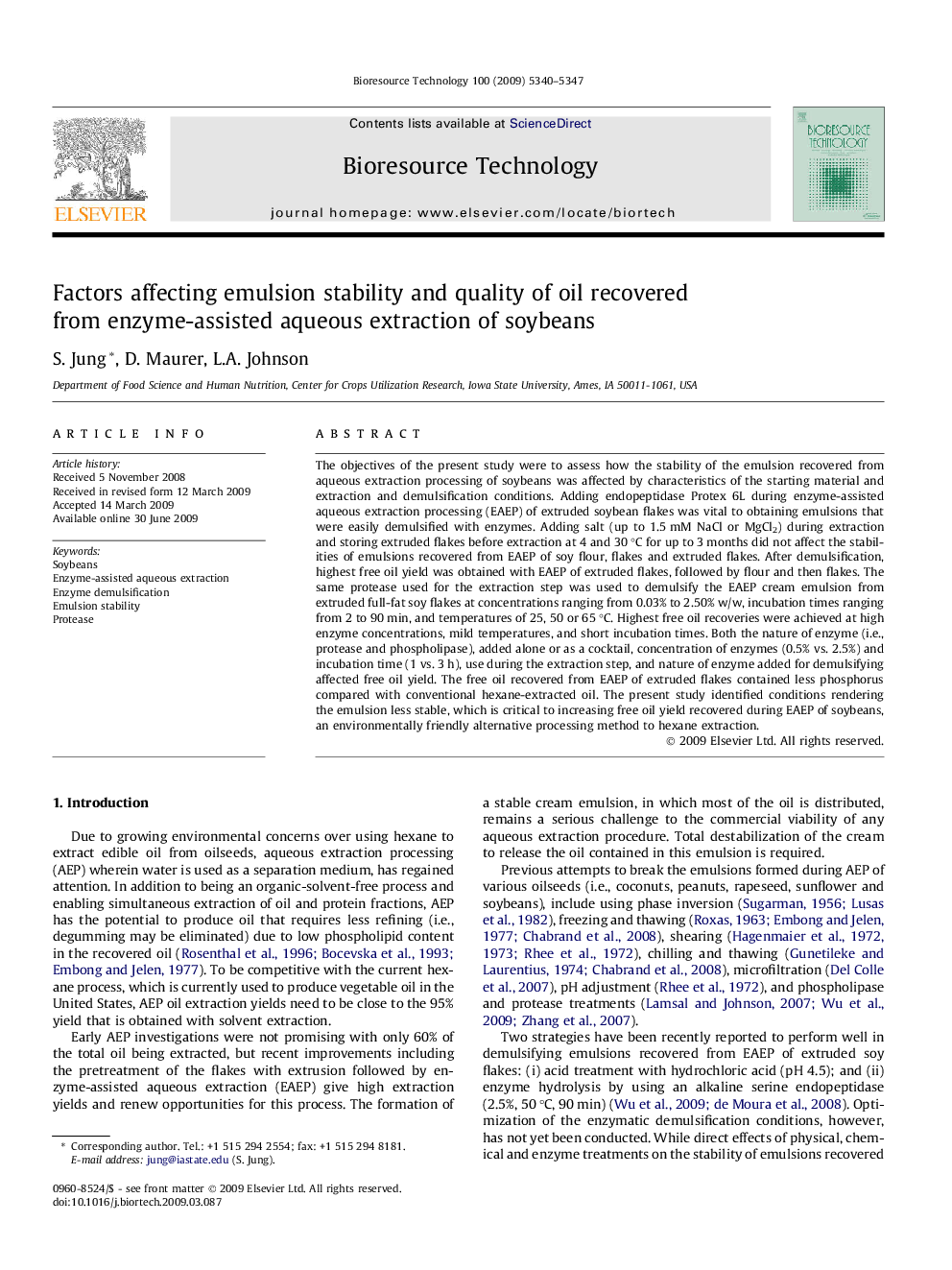| Article ID | Journal | Published Year | Pages | File Type |
|---|---|---|---|---|
| 684499 | Bioresource Technology | 2009 | 8 Pages |
The objectives of the present study were to assess how the stability of the emulsion recovered from aqueous extraction processing of soybeans was affected by characteristics of the starting material and extraction and demulsification conditions. Adding endopeptidase Protex 6L during enzyme-assisted aqueous extraction processing (EAEP) of extruded soybean flakes was vital to obtaining emulsions that were easily demulsified with enzymes. Adding salt (up to 1.5 mM NaCl or MgCl2) during extraction and storing extruded flakes before extraction at 4 and 30 °C for up to 3 months did not affect the stabilities of emulsions recovered from EAEP of soy flour, flakes and extruded flakes. After demulsification, highest free oil yield was obtained with EAEP of extruded flakes, followed by flour and then flakes. The same protease used for the extraction step was used to demulsify the EAEP cream emulsion from extruded full-fat soy flakes at concentrations ranging from 0.03% to 2.50% w/w, incubation times ranging from 2 to 90 min, and temperatures of 25, 50 or 65 °C. Highest free oil recoveries were achieved at high enzyme concentrations, mild temperatures, and short incubation times. Both the nature of enzyme (i.e., protease and phospholipase), added alone or as a cocktail, concentration of enzymes (0.5% vs. 2.5%) and incubation time (1 vs. 3 h), use during the extraction step, and nature of enzyme added for demulsifying affected free oil yield. The free oil recovered from EAEP of extruded flakes contained less phosphorus compared with conventional hexane-extracted oil. The present study identified conditions rendering the emulsion less stable, which is critical to increasing free oil yield recovered during EAEP of soybeans, an environmentally friendly alternative processing method to hexane extraction.
